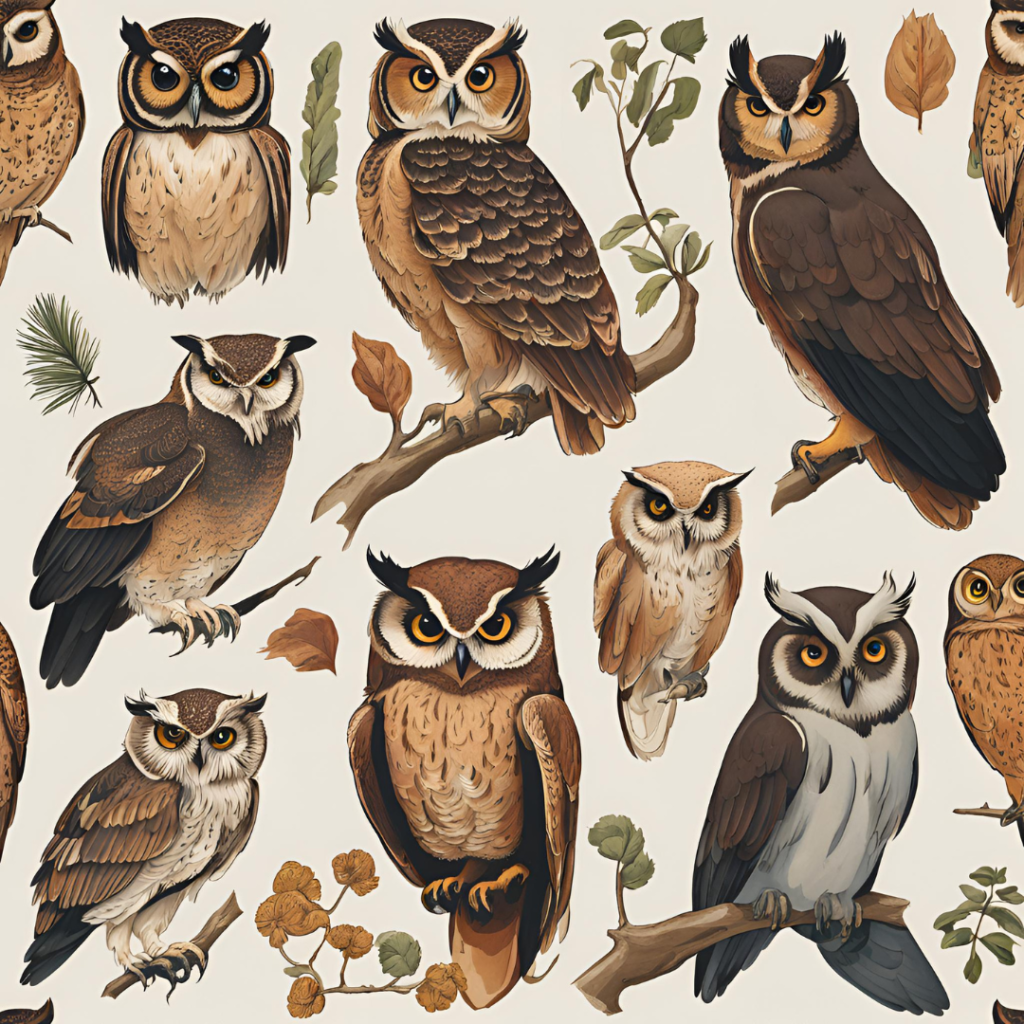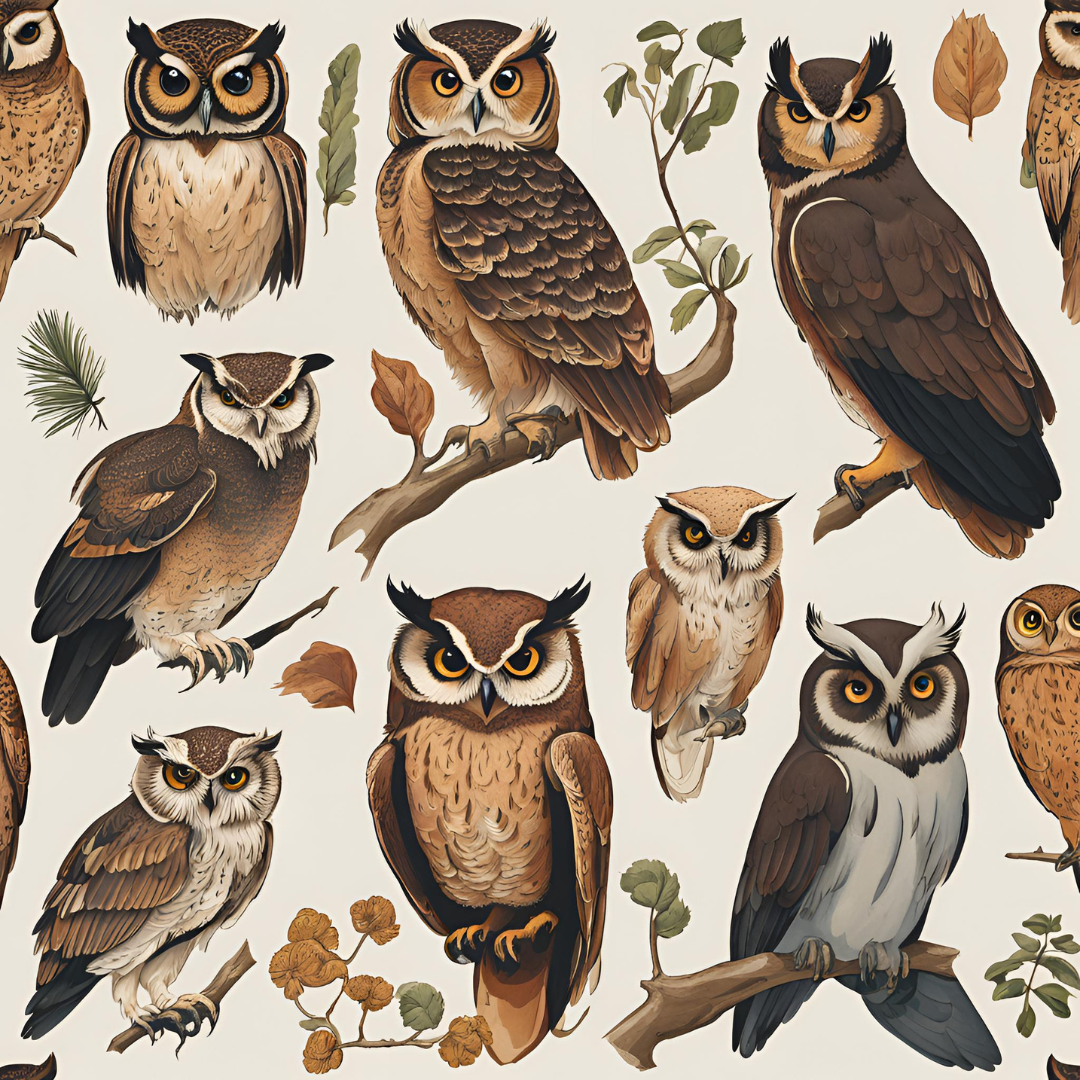All About Owls of the USA (Which Are Common): A Guide to These Beautiful Birds

Within the United States there is a multitude of different owl types, varying in looks, demeanor and habitat. As important pieces of the ecosystem, these night-dwelling hunters play a role in keeping rodent numbers in check and help balance nature. If you are a bird lover or just curious, this guide breaks down the most popular species of owls in the USA.
Great Horned Owl
Great Horned Owl—easily recognizable as one of North America’s most iconic owls by its “Horns”, which are actually tufts.
Length: 18–25 in (46–64 cm) tall, with a wingspan of up to 5 ft (1.5 m)
Habitat: Ranges in forested areas, desert and urban settings
Did you Know: They are at the top of the food chain and can take on prey that is as large as a skunk.
Barn Owl
Barn Owls are the perfect example of a predator that discards all forms of vocalization while hunting and floats quietly over fields and meadows in search of meals with their heart-shaped faces.
Lifespan: 14 -20 inches tall
Habitat: Open areas like grasslands, farmland and even abandoned structures
Fun Fact: They are recognized for their silent flight thanks to special feather structure that reduces sound during hunting.
Snowy Owl
Often associated with cold, open landscapes, the Snowy Owl is an iconic species with contrasting white plumage.
Size: 20 to 28 inches in height, with a wingspan of up to 4½ feet.
Breeding Habitat /Range: Breeds in Arctic tundra and migrates to northern sections of U.S. in winter
Fun Fact: Snowy Owls hunt at daylight; they are diurnal birds.
Eastern Screech-Owl
A small owl that comes in both gray and reddish-brown color morphs – beautifully camouflaged against tree bark.
Size: About 6-10 inches tall.
Habitat: In woodlands and suburbs, often near orchards
Fun Fact: They have a very noisy name, but their calls are soft and trilling instead of loud screeches.
Barred Owl
Richly hued but haunting call of the Barred Owl, “Who cooks for you? instead the loud call that you often hear in forests.
Size: 16-20 inches tall.
Environment: Thick Forests Near Water Sources
Fun Fact: They are quite active during the day, which is unusual for an owl.
Burrowing Owl
Different from other owls that are tree dwellers, Burrowing Owls live in underground burrows usually in grasslands and deserts.
Size: 7-10 inches tall.
Location: The western U.S., where they inhabit open prairies, grasslands, and deserts.
Did You Know: They take an abandoned burrow of a prairie dog or dig their own.
Northern Saw-whet Owl
But this little owl — one of the smallest in the entire U.S. — is frequently missed thanks to its secretive ways.
Size: 6-8 inches tall.
Habitat: Deep woods in all but the northern and western states.
Fun Fact: They are named for their call, which sounds like a saw being sharpened.
Long-Eared Owl
Long-Eared Owls are heavily camouflaged amongst thick leaves with tall, slender ear tufts.
Size: 13-16 inches tall.
Habitat — In woodlands close to open fields
Fun Fact: In winter they are very social, gathering in communal roosts that can have dozens of owls.
Western Screech-Owl
This species is a close relative of the Eastern Screech-Owl and dwells in western regions of the U.S.
Size: About 7-10 inches tall.
Habitat: Dry area, desert and woodland
Fun Human Interest Fact: They are fierce predators that primarily eat insects and rodents, but will even hunt small birds.
Why Owls Are Important
But all owls are some of the most important birds for maintaining ecological balance. Species that control pest populations which protects crops and disease transmission-vectoring rodent species.
Tips for Spotting Owls:
The next thing you could do is Listen for Calls: Most owls are more easily heard than seen, especially at night. Listen to their calls to learn how to identify species
Roosting Spots:
You rarely encounter them during the day but if you must, seek under the tree trunks or shaded area.
Time Your Visit:
Most species are active at dusk, so the best chance of observation will be during these times (i.e. twilight).
Final Thoughts
The USA is owl paradise with its variety of species and habitats. October 2023 You will find an owl; wherever you are, snowy north to arid west.
Knowing about these birds of interest, you can place a deserved value on their astounding beauty and its importance in nature! Stay tuned to our blog for more wildlife content!
